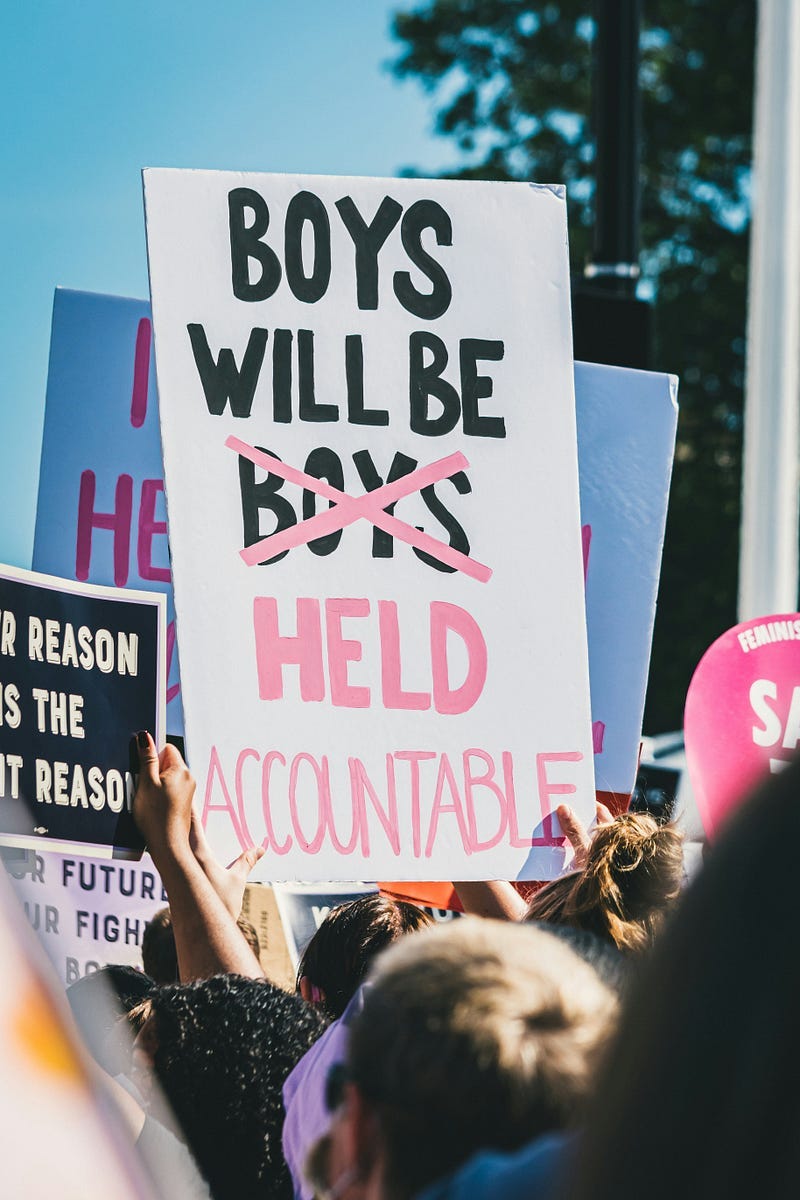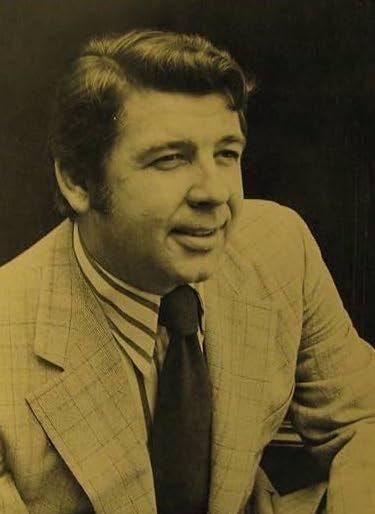“A Rapist is a Man With a Problem:” Claimed A Popular Rape Prevention Program in the 1970s
Frederic Storaska (photo taken from the back of his book)
In the 1970’s Frederic Storaska developed a widely popular guide aimed at addressing the problem of rape. He lectured widely on rape prevention and published a book called “How to Say No to a Rapist & Survive”. Given that both his program and book became hugely controversial and a matter of public discourse, we think it is important to understand him and his work before making a judgment. We wish to highlight that Storaska motivations and thinking about why men raped are key to explaining the kinds of advice and solutions he offered.
What Drove Storaska to Write About Rape Prevention?
Storaska’s main objective was to stop the murder, severe mutilation, and physical harm of women during sexual assault. He dedicated his book to “all the eleven-year-old girls who have had to endure the hell that a negligent society allows.” In the introduction, he told a story about having used karate to stop a group of young boys from raping a girl. He wrote, “no child, no woman, no human being should ever have to undergo what happened to that young girl” (p.xii). While Storaska thought rape was horrendous, he also argued that it was not the worst thing that could happen as “death, mutilation, disease, loss of a loved one, amputation of a limb, going blind, deafness or being mute, mental illness, paralysis” could be even worse (p.3)*.
Storaska designed a program that sought to reduce the number of women being killed or severely harmed, even if this meant that some would be raped. He suggested that if a woman had to choose between being severely harmed/killed or being raped, she should choose rape. In his estimation, his program reduced the overall number of rapes, but more importantly minimized the deaths of women who died resisting sexual assault. Storaska said:
“I refuse to advocate any method of rape prevention that could cause the bodily harm or death of any person using it” (p.26)
Storaska defined rape as non-consensual sex regardles of force being used. He argued that many rapes are never reported and that attempts to sexually assault women often are not even counted (p.5). Thus, the incidence of sexual violence against women is much higher than what numbers may suggest. It is worth noting that this definition of rape was more progressive than the one many used at the time. Further, Storaska insisted that husbands can rape wives, that rapes occur during dates, and that culprits are often known to the victim. Nevertheless, he still argued that rape was rare.
Even if Storaska thought that rape was uncommon, he wrote that “even a single rape victim is one too many” (p.5). Thus, Storaska wanted women to have a greater sense of the danger, while at the same time trying to reassure them that they need not be in constant fear. He also believed that the advice women were getting was endangering them rather than protecting them.

Conventional Wisdom is Counterproductive
Storaska maintained that common wisdom about rape prevention was worse than “worthless,” because rather than helping women, it increased the likelihood that a woman would end up severely harmed. Therefore, he argued that a new approach was needed. For example, conventional wisdom suggested that women should scream if they were being assaulted. Storaska claimed that screaming may be unwise because it could prompt the rapist to end the screaming. He asked readers to imagine;
“What would you do to an innocent little device known as an alarm clock if, one morning, pushing the button on the back, it didn’t turn off. You’d hit it, you’d stomp it, you’d fling it against a wall, you’d smash it… you’d throw it out the window if necessary–anything to stop the damn ringing, right? And, I assume you are an emotionally stable person, unlike the rapist” (p.28).
This crude analogy is certainly provocative (and representative of his style); what do you make of it? While the analogy may seem powerful, we find that comparing how a person may treat inanimate objects and people is problematic.
Another piece of conventional wisdom that Storaska condemned was using force to resist an aggressor. He thought that this established violence as acceptable and encouraged the rapist to also be violent. Storaska was trained in martial arts and while he believed that this could be a useful method of self-defense, he highlighted that the level of mastery it required made it impractical for most people. Even well-trained people could not guarantee a safe outcome. The only time in which he thought potential victims should use violence was if “within the next three or four seconds your assaulter will attempt to kill, or badly injure you” (p.80). He did not think women should risk their life unless it was absolutely necessary even if society may misconstrue their rape.

Storaska reprimanded the legal system because it doubted women had been raped unless they had scars and injuries as evidence of struggle. Unlike how these laws defined rape, he maintained that these women had been raped even if they submitted to sex to avoid injury (p.199).
He indignantly recognized that if a woman did not use force to resist and if she was not at least partly injured, her rapist may not be convicted. Nevertheless, he urged women to avoid using violence as it was better to survive a sexual assault with the fewest injuries possible and a rapist walk free than to be severley mutilated. Storaska also discussed that convicting a rapist was difficult, even in cases where there were obvious and clear signs of struggle. He insisted that women should not have to risk their physical health so a person could be prosecuted. Therefore, he argued that sometimes, the best strategy may be to partly acquiesce to the rapist’s demands:
“Partially surrendering as a stall to give yourself time to find a way to safely react, is as far as surrendering should go. And only you know when that point is.” (p.46)
Storaska was appalled about these laws and the assumptions they carried because he found them to be deeply unjust. Storaska demanded that society “take a close look at what’s happened and place the blame where it belongs” (p.198).
Why did Storaska Think Men Rape?
Storaska argued that society was to blame for creating structures and norms that increased the incidence of rape. He argued that existing gender norms legitimized behaviors that could result in rape. Among these, men were often taught to see women as objects and thus they misinterpreted acts as sexual advances or viewed sex as a reward for certain behavior. In contrast, he sustained that a woman had the “right to act any way she wants to, even if that includes conscious teasing, without being raped as a result” (p.9). In his view, women could never be at fault because there is nothing they could possibly do that would give a “man the right to divorce himself from the human race and become an animal” (p.9).** Still, he added that women “should be aware that how [they] look and where [they] go and how [they] act has an effect on the men with whom [they] come into contact” (p.9)***.

According to Storaska, another way in which gender norms made matters worse was to teach men to compete for the things they wanted. He believed that this feature of capitalism led men astray. He wrote, “if I could cite a single responsible factor, I’d say that rape was a by-product of the overrall pressure our competitive society puts on its male contingent, giving men the impression that all things in life are there for the taking” (p.14). This view implied that men should push and do “whatever a woman allows” (p.97). This same pressure on men was compounded by the unwritten expectation that they make the first move. Storaska argued that this asymmetry raised the stakes for men, given that they could be rejected.
Storaska hypothesized that the combination of the pressure to compete for what men want, the risk of rejection by making the first move, and how men had been conditioned to view women was a recipe for disaster. In some cases, he thought that a rapist’s previous experiences shaped him “to believe women react to him negatively, no matter how they actually feel or what they say” (p.70). Most of these men, he argued, idealized women and saw themselves as inferior which he thought could drive them to rape. A portion of them would try raping if they were rejected “in a manner [they] cannot accept.” (p.107). He did not seek to justify their behavior, but rather understand its origins. In short, Storaska condemned patriarchal views which endangered women and misled men.
What About Rapists?
Storaska thought that reducing the incidence of rape and violence resulting from sexual assault required a series of solutions. These solutions included changing laws and some societal norms and structures which he thought contributed to an environment where some people raped. He believed that these issues also meant that men who tried to rape or who raped were people in dire need of help.
Storaska thought that most rapists were “not monsters.” He believed that “rapists are people, people with a problem” that women could “either fuel or help extinguish by [their] attitude” (p.24)***. We recognize that this seems to place some responsibility on victims, but want to emphasize that, in other places, Storaska was adamant that there was nothing women could do that would justify them being raped. His discussion about rapists being people with a problem is more about the ways in which society’s structures and norms tormented certain men. Storaska thought that recognizing this was essential in determining how one should react when facing a potential rapist. He also proposed another type of rapist existed, though this type was very rare and thought women wanted to be raped. In either case, he urged everyone to think that “whatever threat he may pose to you, remember that a rapist is a man in trouble,” a man who longs for another person’s empathy (p.70). Given his understanding of the causes of rape, he believed that changing norms and structured would reduce the total number of rapists. However, in the meantime, he argued that in some cases women could avoid being raped or maimed if they acted in a certain way or if they treated the rapist humanely. In his view, treating an aggressor kindly was a strategic choice which he thought would be effective, precisely, because these men lacked such experiences.
Conclusions:

Efforts to reduce crime are multifaceted and often rely on a series of assumptions and ideas. In this article we have explored Storaska’s understanding of the causes of rape and his criticism of other rape prevention programs. Storaska’s thinking about these causes impacted the solutions that he offered, which we discuss in our next article. His program also caused quite a stir like other crime prevention initiatives. At CuringCrime we are interested in understanding how modern societies strive to reduce unwanted behaviors and fashion better societies. These crime reduction initiatives have underlying assumptions, a program, and once deployed an impact. Storaska’s story allows us to think about all three.
Authors: Christian Orlic and Lucas Heili. Both contributed to this article. We have written, How to Say No to A Rapist & Survive, which explored the controversies related to this program.
We are interested in this as a historical episode. Neither of us are experts or trained in counseling or preventing this type of crime.
*We wanted to clarify our goal in this article: to understand Storaska as a historical actor. We doubt that a universal hierarchy of suffering could be agreed upon and in no way suggest what that hierarchy, if any, may look like.) We do not know what hurts more or if they can, or should be compared.
**We wholeheartedly agree with his view. We believe that there is nothing any person can do that makes it acceptable for another individual to sexually assault them. We strongly condemn rape and sexual assault.
***Storaska’s wording may suggest that he attributed some responsibility to women. Both of these quotations are problematic. He did say he was hopeful that these norms would change and that society would realize rape victims are “in no way a perpetrator.” Yet, his program assumes that women can take actions to reduce the likelihood of being severely harmed or sexually abused. While Storaska does not make any explicit comments about this, there appears to be an implication that if a woman had handled the situation differently, then the outcomes would have





